Yesterday I was taking linen downstairs. At one time I had it stored in drawers in our closet according to count but then I had taken most of it down to the sewing room and have it in bins according to count. I had forgotten about a drawer of lower count fabric so I went to take it downstairs, along with the floss I had leftover from Addie’s Cat-O-Lantern project. She said “Granny, How do you pick a fabric to stitch?” I went through the whole process with her and then I asked her if she wanted ot help me choose fabric for a project. She did.
She had just finished organizing the floss bobbins and there had been a packet for Isabella Jackson 1829 so I told her we’d grab that chart and go through the entire process. It hasn’t been that long ago that I wasn’t quite sure myself how to go about this so I thought I’d take some pictures while we did it and then write a post.
Most charts will list the floss used in the cover project, as well as listing the “called for” floss. The floss can be a challenge to obtain, especially if using the overdyes or silks. DMC is usually pretty easy to find. The linen . . that’s another story. It is almost impossible to get some of the linens – especially the ones a lot of the designers use. I’ll never understand why people have to use the exact fabric and floss for a project. I’ve given up trying to get R & R or Lakeside Linens. In my opinion, it’s the same thing as if we were quilting and I shared a pattern where I used a certain green fabric on the cover but that green fabric is no longer available . . any green that’s close would work if you’re trying to match the colors exactly.
With linens, even those that are very close, one may have more yellow, or gold; one may have more pink. To me, all that matters is that the stitching shows up. If I have all the called for floss, or if I have a conversion, which I do in this example, if one color doesn’t show up, I’ll just sub it out for something else. Easy fix.
This particular chart calls for 40 count Ale by Picture This Plus. I have a small piece of 36 count Ale, which is big enough for this project and I prefer 36 count over 40 but, to show Addie the process, I pulled out a few 40 count fabrics.
First, the 36 count Ale is in the middle. And, often 36 count linen takes the dye differently than 40 count linen so my 36 count Ale may be totally different from the 40 count Ale this project was stitched on.
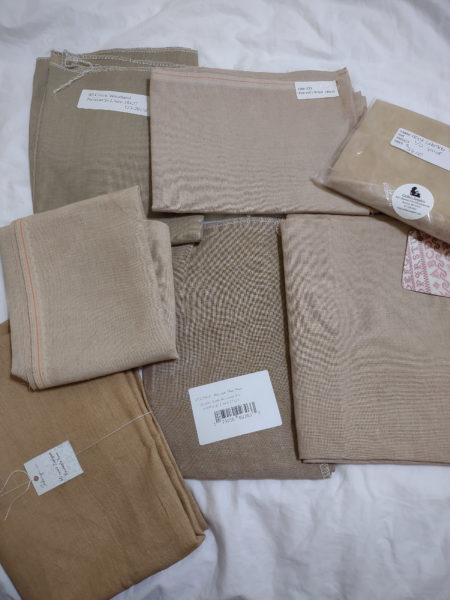
Except for the one on the front left, which I think is too gold for the floss I have, and the one on top of it is too light, I feel like any of these colors would have worked.
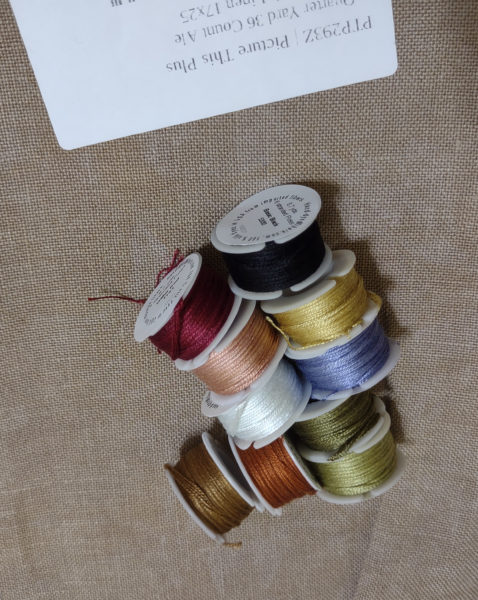
The above picture is all of the floss on the 36 count Ale.
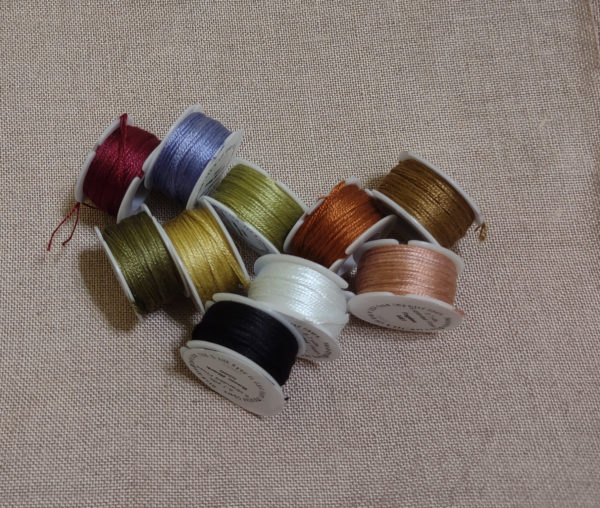
The above photo shows the floss on Patriot’s Brew by R & R.
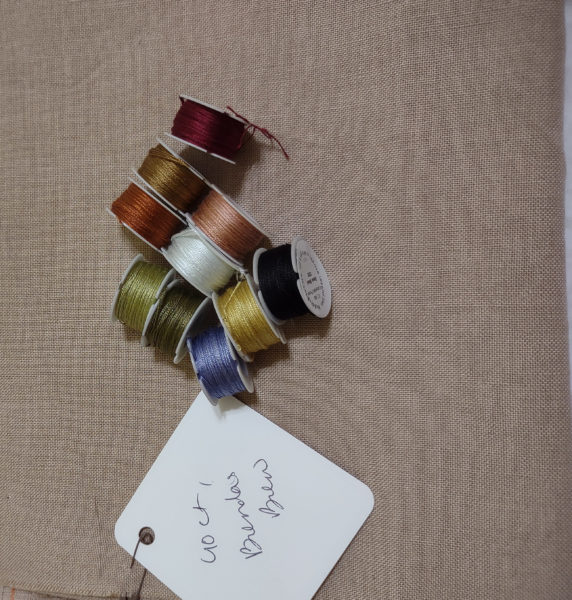
The above photo shows the floss on Brenda’s Brew by R & R. There I go and say R & R Linen is impossible to get and I show two pieces. Honestly, those are probably the only two pieces of R & R that I have. When I first started buying linen almost a year ago, I do believe it was easier to get then, and I mostly bought 40 count. I don’t think I’ve seen R & R available to buy in months and months.
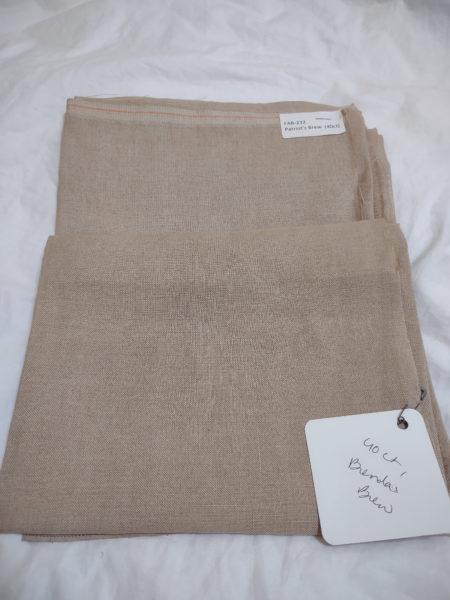
This shows my two options if I want to use 40 count. They are so very close.
When one strand of floss is separated from the bundle, it sometimes isn’t as bright or dark as you might think it would be so I have a bit of concern as to whether that middle/right-ish peachy/apricot color will show up on any of these colors. If it doesn’t, I’ll choose another color from the silks I have here. It isn’t worth fretting about.
This project will be 11-1/4 x 12″ if I use 36 count linen and 10-1/2 x 10-7/8″ if I use 40 count. It isn’t a lot of difference but I’m thinking I might prefer the size on 36 count.
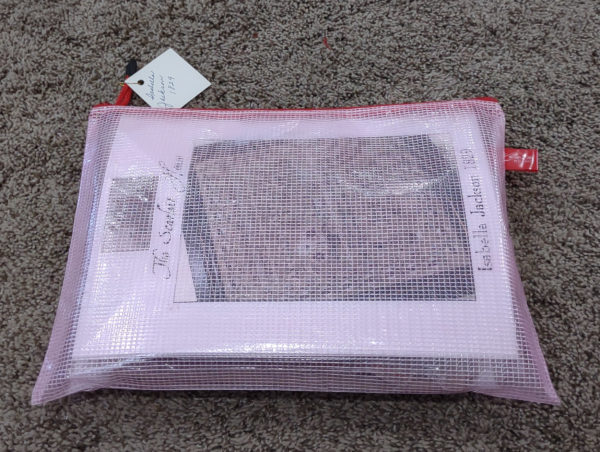
For now, all three fabrics, the floss box and the chart are in a project bag. I’ll decide when I’m ready to start stitching!
